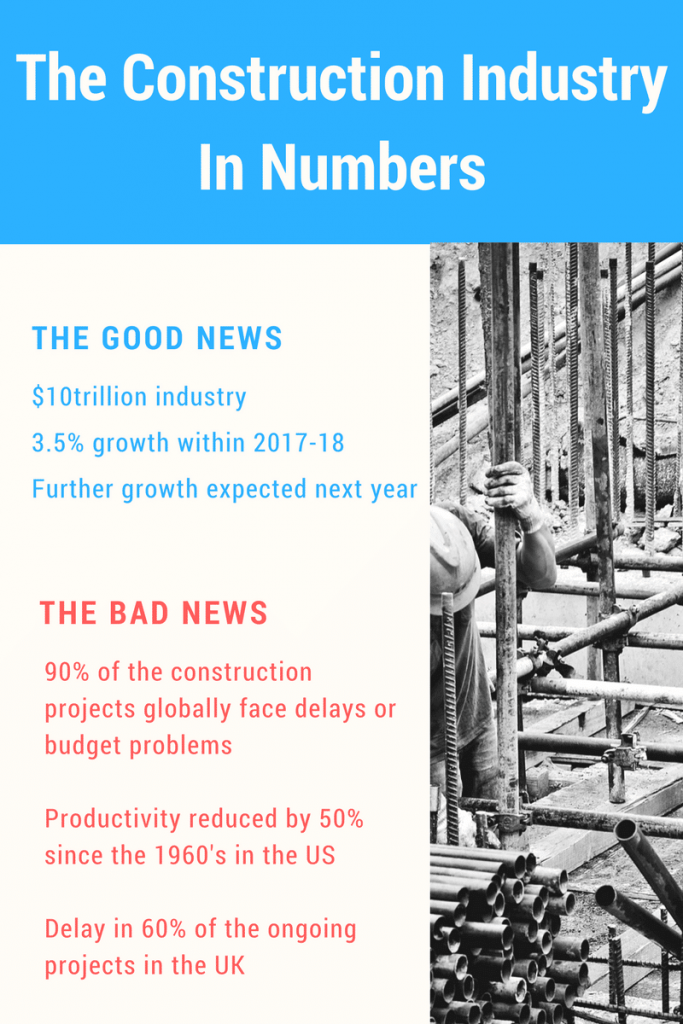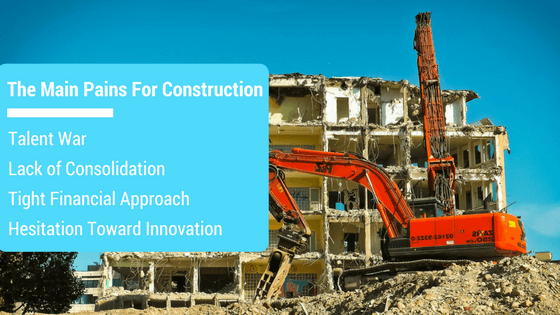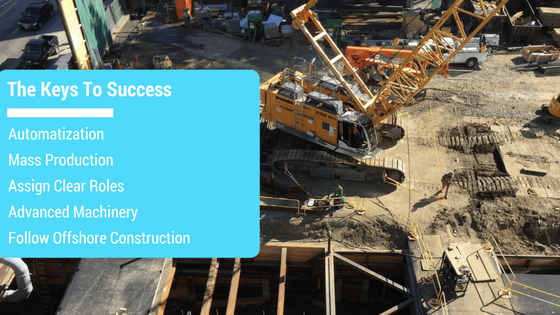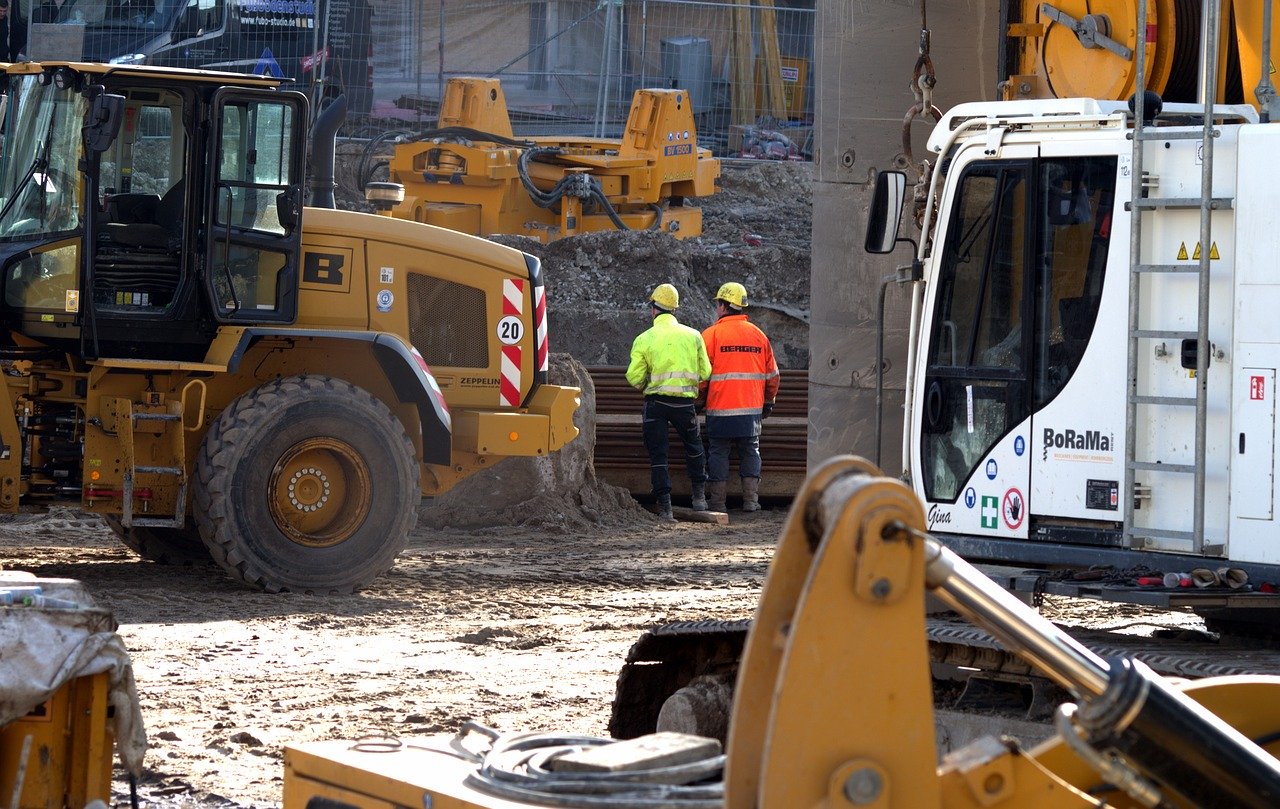During the last years, the discussion around the need for increasing efficiency in construction has got more and more intense. We recently touched upon the issue of modernisation of the UK Industry, and the final remarks were a strong wake-up call for anyone who is interested in the future of construction.
It goes without saying that, this is a world-wide concern which stems from the inability of construction to follow the advent of new technologies as fast as it should. In order to acquire a deeper understanding of the industry’s dead-end, we have to go over some striking examples and analyze the various pathogenesis of our field.
[clickToTweet tweet=”Improving efficiency in #construction is a true nightmare! But we can change this ” quote=”Improving efficiency in #construction is a true nightmare! But we can change this “]
The Berlin Airport Disaster
The first example that reveals the true magnitude of the problem, briefly described above, is the construction of the new Berlin Airport. As it is stated in The Economist, the airport was anticipated to be ready in 2012 and to cost around €1.2 billion. Five years later, the project is still going and the cost has been sextrupled. To make matters worse, a total of 66.500 building mistakes have been detected and are in need of repair.
As you may understand, the 34 million passengers who were estimated to visit the Berlin Airport yearly haven’t stepped their foot there, yet. Instead, the manager of the project had to step out of it after being a bit too sincere concerning the progress of the whole process. More specifically, he called the project a “shit show”. And continued by pointing out that someone needs to be addicted to pills in order to work there. No doubt that things could have gone a bit better in this case.
The Silicon Valley Misstep (Apple Headquarters)
Of course, the Berlin Airport isn’t the only case of problematic construction processes. The new Apple Headquarters in Silicon Valley are yet another manifestation of budget and resources mismanagement in the construction industry. The following numbers can be pretty descriptive:
- $ 2 billion above the estimated budget
- Delivered 2 years later than scheduled
- 30 pages of wood use guidelines
Nobody can refuse that, with great projects come great responsibility. Nevertheless, someone would expect that projects of such magnitude and glimpse could easily tackle any potential delays through a highly automatized construction approach.
The British Patient
The two noteworthy examples of the Berlin Airport and the Apple Headquarters are just a part of a bigger and more serious issue. Only in the UK market, there is a delay in 60% of the ongoing projects. Mark Farmer has made some great remarks concerning the obstacles that the UK industry is encountering. The same problems are giving a hard time to the Western construction market as a whole. In a nutshell, they could be summarized to the following:
Strong need for integration
This should be the basis on which the future of the construction industry will be built. A full integrated model would allow for the optimization of the whole process (design, procurement, building etc.) and by extension the cost and delays minimization. To put it simply, all the unnecessary extra steps will be eliminated and the communication between the different parties will be empowered.
New working force type
Apart from the need for integration, there is an imminent demand for a different type of workers in the industry. Due to the advent of new technologies, today more than ever before the construction industry has to start attracting young and highly skilled professionals. In that manner, it could make the transition to the new digitization era much easier and faster.
Want To Know More? Modernise Or Die: The Need For Change In Construction
Politics harm the industry
The effort of the different political representatives to remain consistent with the general orientation of their party has created a lot of unneeded trouble for construction. As a consequence, there are cases where political ambitions or feasibilities impedes the industry’s endeavor to invest on efficiency and innovation.
Clients should join the game
By now, one of the main problems behind the formulated situation has to do with the fact that there is no alignment of expectations. Clients should start having a saying in the whole process, if we want to avoid the creation of a modern Babel in the construction industry. A coordinated vision has to be built before it’s too late.
The aforementioned points don’t concern, of course, only the United Kingdom. These problems are getting more and more prominent all over the world. Mark Farmer used the British issue so as to provide a complete idea of the problem.
The General Picture
This close monitoring of the UK industry can help a lot in shedding some light on the habits and agonies of construction in general. First things first, it is noteworthy that construction is a $10trillion industry. On top of that, an additional growth of 3.5% is anticipated in 2017-18 for the whole construction market according to Euler Hermes. However, these impressive numbers might be deceiving.

The Danish economic geographer, Bent Flyvbjerg, underlines that we shouldn’t get too excited as the 90% of the construction projects around the globe are facing problems with budget and/or scheduling. But the productivity problems don’t stop here. In the US, productivity has been reduced by 50% since the 1960s. Europe is no exception if we consider that leading players, like Germany, aren’t able to achieve positive productivity numbers. At the same time, more vulnerable markets, like the Italian and the French, keep losing in terms of project efficiency.
The Main Sources Of Pain
In short, here are some of the biggest problems that the construction industry needs to battle against, so it can globally get back on track in terms of efficiency and productivity:

Tight Financial Approach
It is highly problematic that the industry appears to be so conservative when it comes to investments. The most representative example, among others, is the fact that machinery is still widely substituted by workers when it comes to large scale construction projects. This makes sense in markets where labour is cheap (eg. Saudi Arabia) but not in the Western market. This tendency is an open sign that the industry hasn’t abandoned the idea that we constantly prepare ourselves for the times of crisis. In that sense, workers can always let go but machinery can’t. This approach hinders every thought for further -sometimes risky yet valuable- investments.
Hesitation Toward Innovation
As a physical extension of the first point, construction decision-makers are very hesitant toward change and innovative techniques. Tight budgets remain the number one priority. As a consequence, new powerful investments are being pushed away. In many cases, the newly emerged technologies are seen as extremely hazardous even by those who adopt them. It goes without saying that, this attitude doesn’t allow for much of development.
Learn More Here: The Future Of Construction – BIM
Lack of Consolidation
A solution to the above remarks could be for the well-performing players to join forces in an effort to share the risk and the success. But the absence of real collaboration and revenue share is another element that tortures construction. This reality has led to a painful fragmentation of our industry and has achieved a strong hit against project productivity. Every country, and in many cases every company, has different building regulations which eventually turns to be a harmful habit.
Talent War
Attraction of talent in construction is one thing. Talent retention, though, is another. Construction has to compete with various fields. Especially those which have managed to take that crucial extra step in terms of technological disruption. Now is the time for our industry! It should adjust its workforce needs and launch itself as a the promise land of long-term careers.
It’s understandable that, we are talking for a tough and very demanding battle. First and foremost, against the bad habits of the industry per se. The fear for investments in combination with the lack of true collaboration are holding back the remarkable growth potential that the industry has.
The Keys To Success
The bright side in this tricky situation is that construction has many secret weapons that could be real game-changers. All our industry needs is a better understanding of its true powers and a more coordinated action toward the common good. Let’s have a quick look at some of the most critical solutions below:

Automatization
We aren’t reinventing the wheel when we are talking about the necessity of embracing automatization in construction. Construction software undoubtedly is the first step that can bring us a bit closer to our goal of maximizing efficiency. The technological disruption of our sector could minimize the required time for various projects. In that aspect, it could eventually lay the road to full integration between the different agents of the project. This unlimited flow of information would allow for sharing powerful insights, eliminating project delays and simplifying clash detection. With no hesitation, automatization of the construction process is the way to go.
Advanced Machinery
We have referred to the importance of advanced equipment for boosting efficiency on site. In the beginning, it might seem like a costly choice. But in the long-term it will empower the task completion process and increase profit and safety. There already is great machinery that is able to complete tasks with no human involvement (eg. building drones) and it is anticipated to take over construction in the near future.
Don’t Miss Out: UK Construction – The Struggle For Momentum
Follow Offshore Construction
Offshore construction is the bright exception within our industry. And it should become a great example for the whole sector. The challenging nature of this process has led to admirable technological investments. The exploration of new more efficient practices during the construction procedure is an additional benefit. On top of that, a very interesting turn to massive production was noticed as a way to reduce the estimated time for the completion of a project.
Establish Clear Roles
At the moment there is too much fuss around every construction project. A clean and comprehensive designation of roles could prevent this and contribute to the creation of a more solid structure. A waterfall planning of the whole project would allow for a more efficient construction process where every step is connected with the previous one and there is a coherent sequence based on which every project is conceived and executed.
Mass Production
Last but not least, mass standardized production might offer an unexpected solution. Companies, like BoKlok, which have their focus on mass construction have managed to see great value by completing a significant part of their projects away from the site. In that way, they can speed the whole procedure up and regulate the estimated cost and delays more efficiently. There are, of course, examples where mass building didn’t work out so well (eg. UK), but with the right plan it can be a smart answer to the problem.
[clickToTweet tweet=”Improving efficiency in #construction is a true nightmare! But we can change this ” quote=”Improving efficiency in #construction is a true nightmare! But we can change this “]
Conclusion
All in all, it’s clear that solutions exist. The biggest difficulty is to actually implement them and convince the different construction agents to stray further from their bad habits. The positive aspect of the story is that this vital issue lately attracts more and more attention.
As Marker Farmer smartly suggests, an inclusive sector deal is the only way forward. Otherwise, the existing fragmentation of the sector will lead construction to a deeper crisis which at some point will be irreversible.




